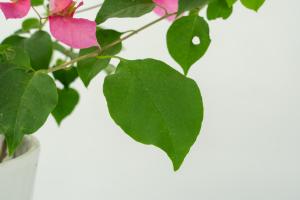Can You Plant Any Trees in the Dunes?
A common question asked by beachgoers and environmental enthusiasts alike is whether trees can be planted in beach dunes. The answer is not as simple as a yes or no, as it depends on various variables. In this article, we explore the factors that dictate the feasibility of planting trees in dunes and the benefits and drawbacks of pursuing such initiatives.
The Importance of Dunes
Beach dunes are critical natural habitats that provide a range of ecological services, including protection against coastal erosion, buffering effects against storms, and hosting unique flora and fauna. Dunes are formed by sand accumulation, and planting trees in them can alter their composition and undermine their integrity. Therefore, any interventions in dunes should be well thought out and evaluated to ensure that they do not compromise the natural balance.
Tree Species Selection
Not all tree species are suitable for planting in beach dunes. Coastal environments are characterized by high winds, saltwater intrusion, and low-nutrient soils, making it challenging for most trees to survive. In this regard, it is advisable to select species with traits that can withstand the harsh coastal conditions. Some of the most commonly recommended tree species for dunes include sea oats, red cedars, live oaks, and wax myrtles.
Impact on Sand Movement
Planting trees in dunes can significantly impact the natural sand movement, which can cause erosion and destabilization. The root systems of trees can penetrate deep into the sand, holding it together and stabilizing the dune. However, the foliage of the trees can also trap sand, causing it to accumulate in some areas and reduce sand flow to other areas. This can have catastrophic consequences for the dune ecosystem over time leading to erosion, soil damage and submerging under rising seawaters.
The Benefits of Planting Trees in Dunes
Despite the potential drawbacks of planting trees in dunes, there are also significant benefits that justify their implementation. When properly executed, tree planting can improve biodiversity by providing habitats for a range of wildlife, contribute to the beautification of beach settings, provide shading and cooling areas for beachgoers, and enhance the overall health and resilience of the dune environment. Therefore, with sensitivity to the surrounding environment, thoughtful planning, regular maintenance, and monitoring, planting trees can be a viable way to enhance the ecological and social values of dune settings.
In Conclusion
The viability of planting trees in beach dunes depends on various factors, including the species selection, sand movement, ecological impact, and sustainability. The ecological services provided by dunes make it critical to carefully weigh the pros and cons of any interventions that may be necessary. In the end, a judicious approach is necessary to ensure that the benefits of planting trees outweigh the potential negative impacts.

 how many times do yo...
how many times do yo... how many planted tre...
how many planted tre... how many pine trees ...
how many pine trees ... how many pecan trees...
how many pecan trees... how many plants comp...
how many plants comp... how many plants can ...
how many plants can ... how many plants and ...
how many plants and ... how many pepper plan...
how many pepper plan...





























